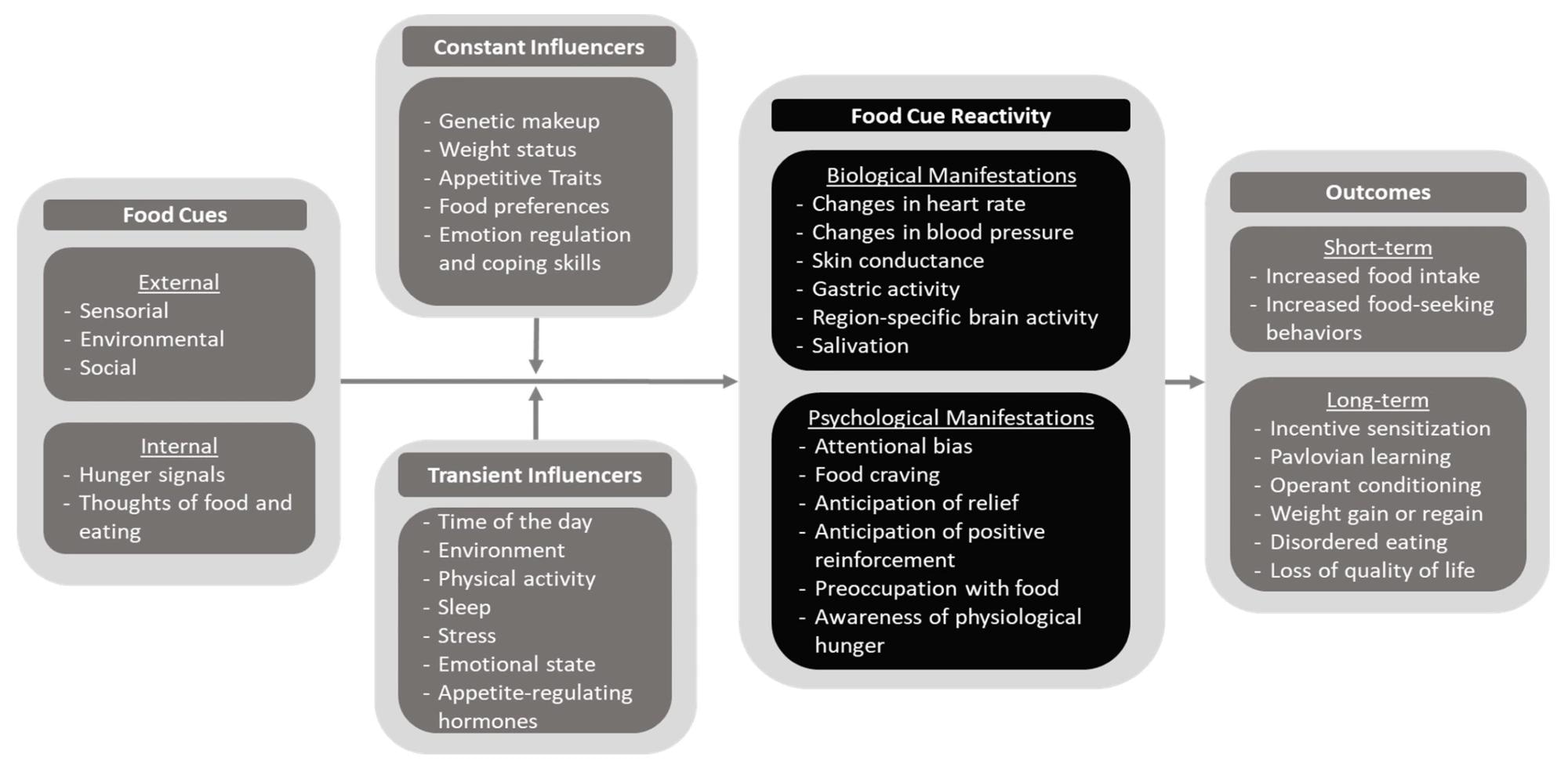In a recent study published in the journal Nutrients, researchers in the United States reviewed anecdotal evidence about the concept of "food noise." They discussed the methods used in studies on human eating behavior to assess and define "food noise" and the construct of food cue reactivity.
 Study: What Is Food Noise? A Conceptual Model of Food Cue Reactivity. Image Credit: Tero Vesalainen/ Shutterstock
Study: What Is Food Noise? A Conceptual Model of Food Cue Reactivity. Image Credit: Tero Vesalainen/ Shutterstock
Background
Extensive research on obesity treatments has led to significant advancements, such as improved bariatric surgery and a wide range of medications. The development of glucagon-like peptide-1 receptor agonists, or GLP-1RAs, has been a monumental step in weight management. Liraglutide and semaglutide are two GLP-1RAs that were initially used to treat type 2 diabetes but have been approved by the United States Food and Drug Administration to be used for weight management. The use of GLP-1RAs has resulted in significant positive results, with dose-dependent weight loss and cardiometabolic improvements when combined with lifestyle interventions.
GLP-1RAs are also thought to activate the glucagon-like peptide-1 receptors in the organs and tissues in the body, especially the pancreas, gastrointestinal tract, and regions of the central nervous system, which regulate appetite and blood glucose and promote feelings of satiety. GLP-1RAs are also believed to traverse the blood-brain barrier and regulate reward-seeking behavior and appetite. Anecdotal evidence also points to reductions in "food noise," indicating a psychological benefit to using GLP-1RAs in treating obesity.
Food noise
While positive results in weight loss associated with the use of GLP-1RAs have been observed in the clinical setting, anecdotal evidence from patients also report reductions in "food noise," a term used to describe the persistent and dominating thoughts about eating and food that make the patients feel that that food was the center of their lives. Examples of "food noise" described by the patients include constant thoughts about energy-dense and highly palatable foods, thoughts about the next meal while they consume one meal, and temptations to check food delivery apps.
Such food-related intrusive thoughts can hinder the implementation of lifestyle alterations and contribute to emotional eating, maladaptive behaviors, and overeating. While the use of GLP-1RAs has been reported by patients and in the clinical setting as having a significant impact in reducing food-related intrusive thoughts, it is essential to conceptualize the concept of "food noise" and related constructs such as food cue reactivity.
 The CIRO model of food cue reactivity.
The CIRO model of food cue reactivity.
Food cue reactivity
Extensive neural circuitry in the mesocorticolimbic region of the brain dictates the motivational responses elicited by food cues such as sight, smell, and sound. These motivational responses manifest as food cravings and can be disconnected from a physiological need for food based on hunger, leading to food-seeking behavior.
While such responses to food cues have been evolutionarily advantageous at times of scarcity to help humans meet their nutritional requirements, in the modern, industrialized age, where humans are surrounded by plenty of food and food cues, such motivational responses lead to obesity and overweight if unchecked. Furthermore, the influence of social media and digital platforms present food cues in attention-grabbing ways to intensify food cravings and consumption.
However, reactions to food cues also differ across individuals, explaining why some individuals are more disposed than others living in the same environment to develop obesity. Studies have shown increased cue reactivity in overweight individuals, indicating that exposure to the same levels of food cues can lead to different experiences of "food noise" and subsequent food-related intrusive thoughts in different individuals.
Methods to study food cue reactivity
The review describes the Cue-Influencer-Reactivity-Outcome or CIRO model, which helps assess and understand food cue reactivity and its manifestations and determinants beyond obesity and maladaptive eating behaviors. This model also highlights that food cue reactivity is influenced by a combination of constant and changing factors, resulting in its dynamic nature.
Food cue reactivity can be assessed based on its biological and psychological manifestations. The biological or physiological manifestations include measurable cephalic responses such as blood pressure, heart rate, skin conductance, salivation, and gastric activity. The brain's responses to food cues can be studied using magnetic resonance imaging and electroencephalography. The psychological manifestations can be assessed based on changes in attention, measured using reaction-time or eye-tracking paradigms and questionnaires on factors that influence eating behaviors.
Outcomes and implications
The researchers also discussed the short and long-term outcomes of increased reactivity to food cues, such as incentive sensitization, conditioning, eating disorders, weight gain, and obesity. The study presented additional insights gained from using the CIRO model to assess the potential roles of GLP-1RAs in managing substance use and addiction disorders.
The review states that modifications to food cue reactivity can be brought about by changing the food environment and exposures to food cues and altering the influencing factors of food cue reactivity. The researchers also believe that to maximize the larger public health benefits of addressing food cue reactivity, concerted efforts are required on the part of clinicians, policymakers, administrators, and the individuals themselves. For example, behavioral and pharmacological efforts on the individual level might need to be combined with community and administrative involvement to change the food environment.
Conclusions
Overall, the review presented a comprehensive understanding of the concepts of "food noise" and food cue reactivity. The researchers also discussed in depth the factors that influence food cue reactivity, the methods to assess it, and the various levels at which it can be addressed to influence eating behaviors.
Journal reference:
- Hayashi, D., Edwards, C., Emond, J. A., GilbertDiamond, D., Butt, M., Rigby, A., & Masterson, T. D. (2023). What Is Food Noise? A Conceptual Model of Food Cue Reactivity. Nutrients, 15(22). https://doi.org/10.3390/nu15224809, https://www.mdpi.com/2072-6643/15/22/4809